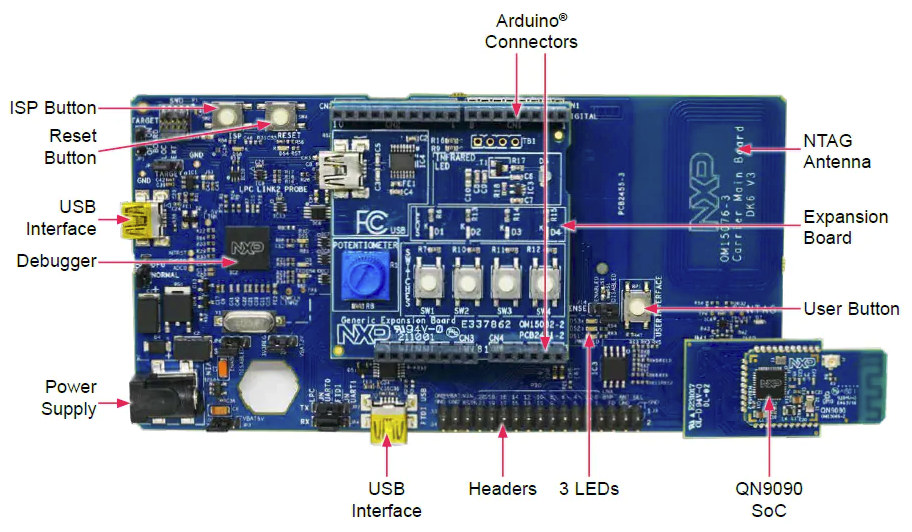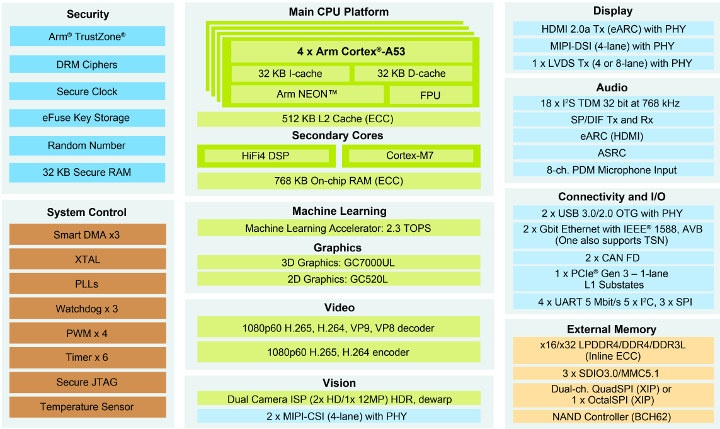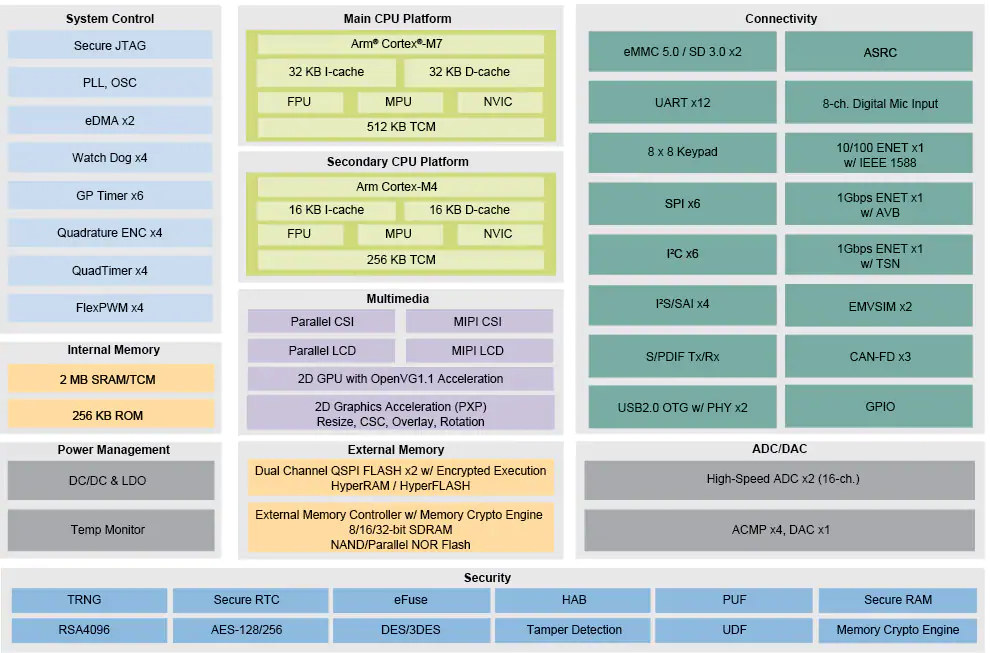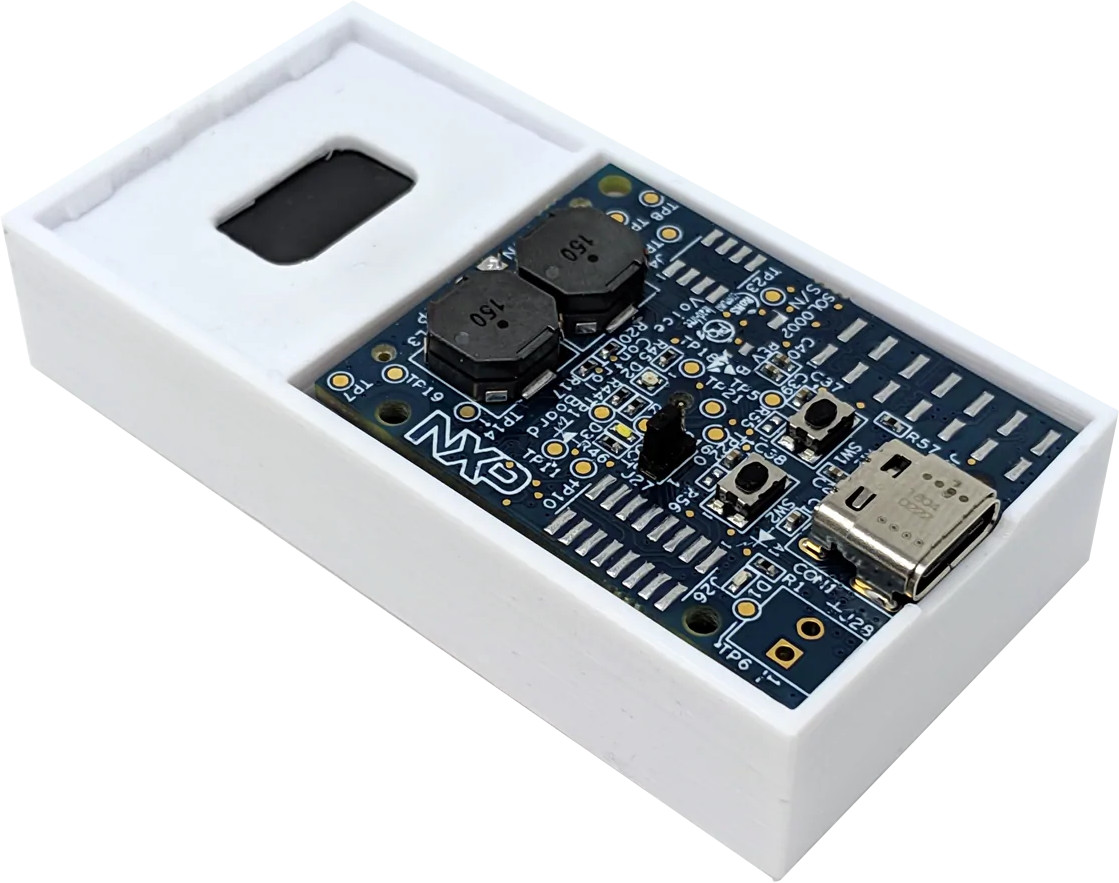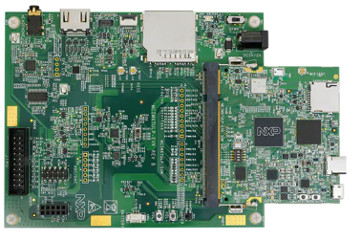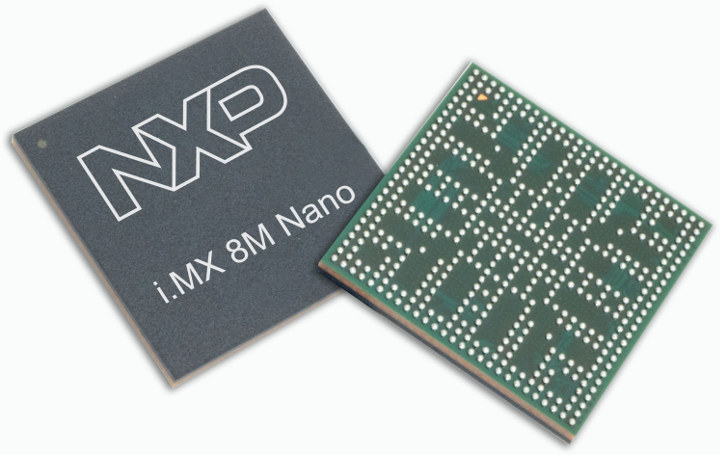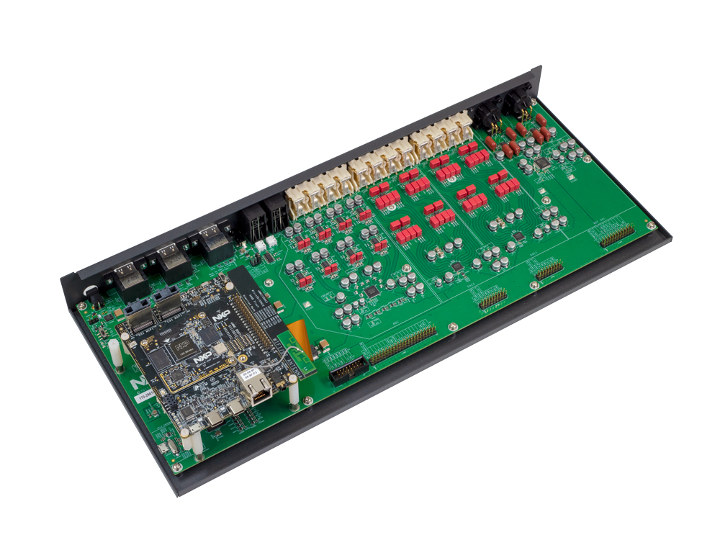Several silicon vendors started to unveil WiFi 6 (802.11ax) chips in 2017-2018 such as Broadcom BCM43684, BCM43694 & BCM4375, and Marvell 88W906x. While NXP launched QorIQ LA1575 programmable wireless SoC with expected 802.11ax support early 2017, AFAIK they did not introduce any specific WiFi 6 chips. But last year, the company used some of its cash to purchase Marvell’s WiFi & Bluetooth business and has now announced the availability of Marvell NXP WiFi 6 chips and solutions which mostly are the ones announced by Marvell in 2017. NXP Wi-Fi 6 solutions include NXP 88W9064 & 88W9068 4×4 and 8×8-stream solutions with WiFi 6 and Bluetooth 5 for home and enterprise access solutions NXP 88Q9098 concurrent dual Wi-Fi 6 2×2+2×2 + Bluetooth 5 AEC-Q100 qualified solutions for infotainment and telematics automotive applications NXP 88W9098 concurrent dual Wi-Fi 6 2×2+2×2 + Bluetooth 5 solutions for multimedia streaming and consumer access applications Unnamed […]
NXP QN9090 & QN9030 Bluetooth 5.0 SoC’s Come with Optional NFC Tag (NTAG)
NXP has recently announced the availability of its QN9090 and QN9030 Bluetooth 5.0 SoC with optional support for 802.15.4, Multiprotocol RF, and NFC technology. Both devices are powered by an Arm Cortex-M4 core clocked at 48MHz, but differ in terms of on-chip storage and memory with QN9090 equipped with 640KB flash and 152 KB SRAM, against 320KB flash and 88KB SRAM for QN9030. The “T” versions – QN9090T and QN9030T – add NFC integrated on-chip, enabling Bluetooth pairing by tapping a smartphone, tablet or other NFC reader device without the need for a battery-powered NFC tag. NXP QN9090(T) & QN9030(T) Bluetooth 5.0 SoCs Key features and specifications: CPU – Arm Cortex-M4 up to 48MHz Built-in Memory & Storage QN9090(T) – 640 KB flash, 152 KB RAM, 128 KB ROM QN9030(T) – 320 KB Flash, 88 KB RAM, 128 KB ROM External Storage – Quad-SPI for execute in place or data […]
NXP i.MX 8M Plus Processor Targets AI Applications with a 2.3 TOPS Neural Processing Unit
NXP has just announced its first i.MX processor with a dedicated neural processing unit (NPU) at CES 2020. The NXP i.MX 8M Plus SoC is built upon the existing i.MX 8M Nano family with a quad-core Arm Cortex-A53 processor running at up to 2GHz, an independent real-time Cortex-M7 microcontroller @ 800MHz, and a Vivante 3D GPU, but adds a 2.3 TOPS NPU to the mix. The NPU will enable advanced machine learning inference at the industrial and IoT (Internet-of-Things) edges for applications such as people and object recognition for public safety, industrial machine vision, robotics, hand gesture, and emotion detection with natural language processing. NXP i.MX 8M Plus key features and specifications: CPU – Quad-core Arm Cortex-A53 processor @ up to 2.0 GHz with 512KB ECC cache Real-time MCU – Arm Cortex-M7 @ up to 800 MHz GPU – Vivante GC7000UL 3D GPU, Vivante GC520L 2D GPU DSP – HiFi […]
NXP i.MX RT1170 Arm Cortex-M7/M4 Microcontroller Clocks at One Gigahertz!
Microcontrollers used to be those cute little things that clock at 8 or 16 MHz, but in the last decade, Cortex-M3/M4 microcontrollers became more powerful with 100 to 200 MHz clocks being quite common. But with the introduction of Arm Cortex-M7 core about 5 years ago, microcontrollers are seriously starting to take over tasks that were previously reserved to faster microprocessors. As I remember it, the MCU frequency “race” started with STMicro STM32H7 in 2016 with an impressive 400 MHz, and NXP i.MX RT crossover processor clocked at 600 MHz a few years later. But with i.MX RT1170 microcontroller, NXP has upped the ante as the new MCU combines an Arm Cortex-M4 core clocked at 400MHz with Arm Cortex-M7 core running at an amazing one Gigahertz (1 GHz). The documentation has not been released and we have limited information, but here’s what we know about NXP i.MX RT1170 key features […]
NXP i.MX RT106F & RT106A/L Cortex-M7 Processors Target Offline Face Recognition & Smart Audio Applications
NXP i.MX RT crossover processors combine real-time capabilities of microcontrollers with the performance of application processors thanks to an Arm Cortex-M7 core clocked at 528 MHz and more. The performance is indeed impressive as shown by Teensy 4.0 benchmarks, but so far NXP i.MX RT processor targeted general purpose applications. The company has now introduced three new crossover processors designed for AI applications. NXP i.MX RT106F is designed for offline face recognition and expression Identification, while RT106L and RT106A are made for local and cloud-based embedded voice applications. NXP i.MX RT106F Processor Highlights of the processor: CPU – Arm Cortex-M7 @ 600 MHz (3020 CoreMark/1284 DMIPS) Memory – 1 MB On-Chip SRAM plus up to 512 KB configurable as Tightly Coupled Memory (TCM) External memory interface options – NAND, eMMC, QuadSPI NOR Flash, and Parallel NOR Flash Real-time, low-latency response as low as 20 ns Industry’s lowest dynamic power with […]
NXP i.MX 7ULP Enters Mass-Production, EVK and Systems-on-Module Announced
Last year, we wrote about F&S Elektronik Systeme PicoCORE MX7 system-on-module (SoM) powered by NXP i.MX 7ULP processor manufactured with a 28nm FD-SOI process, and that was announced a year earlier. The official launch of the module was planned for Q3 2018, but there have been some delays as LinuxGizmos reports NXP has only started mass production of their i.MX7 ULP this June. With the official launch of i.MX 7ULP, the company also introduced the official i.MX 7ULP Evaluation Board (MCIMX7ULP-EVK) as showcased on Element14’s community and several other companies announced i.MX 7ULP systems-on-modules. Benefits of NXP i.MX 7ULP Processor The i.MX7 ULP family of processors is an extremely power-efficient series, that is utilizing lower power for more functions. The SoC is being touted as the most power-efficient processor that can be obtained that also houses a 3D GPU. Although like the i.MX7, the i.MX 7ULP combines both Cortex-A7 and […]
NXP i.MX 8M Nano is a Power-optimized Arm Cortex-A53/M7 Processor
NXP introduced their first 14nm i.MX processor at Embedded World 2018 last year with i.MX 8 Mini processor equipped with up to four Cortex A53 cores clocked at 2.0 GHz and one real-time Cortex-M4 cores clocked at 400+ MHz, and optional 1080p video output and decoding/encoding. The company has now added another 14nm member to their i.MX 8M family with NXP i.MX 8M Nano family also featuring four Cortex-A53 cores at up to 1.5 GHz, but replacing the Cortex-M4 by a more powerful Cortex-M7 core clocked at up to 600 MHz. The processor is also power-optimized for less than 2W total dynamic power (TDP) and sub-watt in many IoT edge applications. NXP i.MX 8M Nano key features and specifications: Application cores – One to four Arm Cortex-A53 cores up to 1.5 GHz per core; 32KB L1-I Cache/ 32 KB L1-D Cache; 512 KB L2 Cache Real-time core – Arm Cortex-M7 […]
NXP Immersiv3D Enables DSP-Free Dolby Atmos & DTS:X Audio Systems
High-fidelity audio systems such as soundbars, smart speakers, and AV receivers have traditionally relied on DSPs (Digital Signal Processors) to deliver low-latency audio processing, and enable audio and video synchronization. DSPs add to the cost of the overall design however, and with Immersiv3D technology, NXP has leveraged Arm Cortex-A53 and M4 cores in their NXP i.MX 8M Mini processor to completely remove the need for DSP in audio systems, shaving the BoM cost by up to 20% according to an article on EETimes. Immersiv3D also enables immersive audio support with Dolby Atmos and DTS:X, advanced audio pre/post processing, advanced features like voice control for the smart home. Immersiv3D audio solution was designed to help OEMs to bring to market affordable consumer audio devices with Dolby Atmos and DTS:X, and beside the audio processing software, NXP is also offering an Immersiv3D audio reference design to help them delelop sound bars based […]



